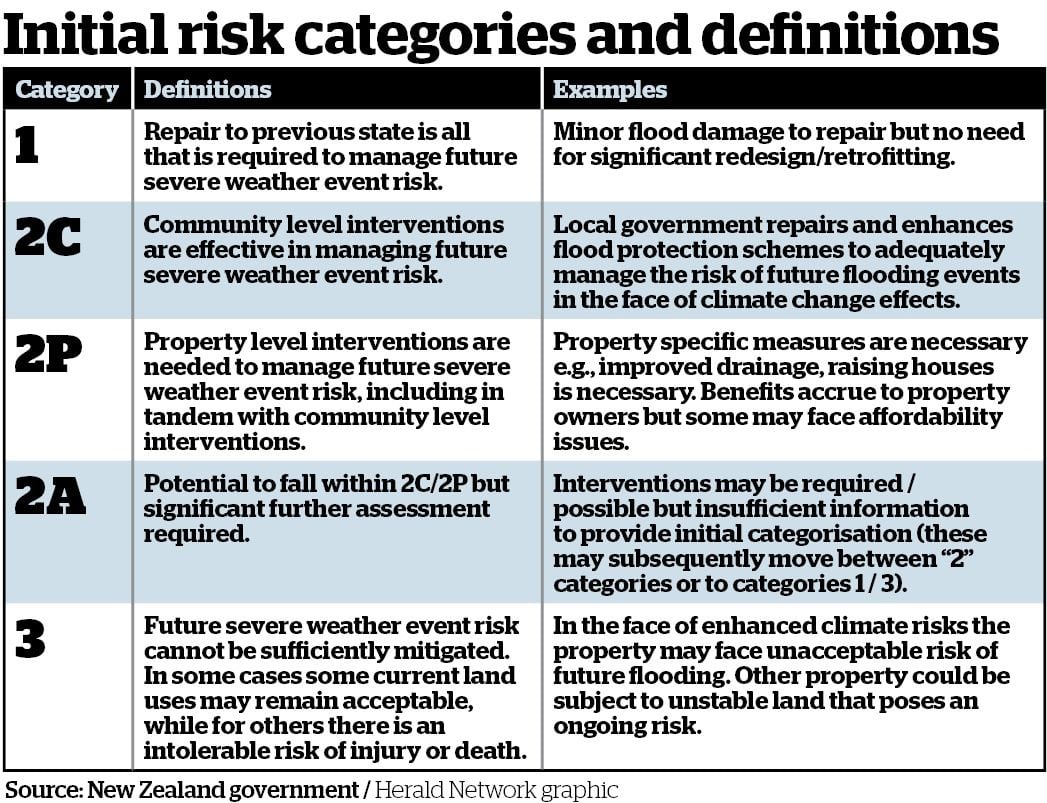Maggie Braviner knows exactly what zoning category she wants her flood-damaged home near Napier to be included in when a long-awaited announcement is made on Thursday, giving flood victims clarity around whether they can rebuild and move on with their lives.
“Definitely category one - we hope to be in that one. We would love to rebuild and love to return home,” Braviner said, of her Whirinaki home.
Braviner and hundreds of other cyclone-hit property owners around Hawke’s Bay will receive an email from mid-morning on Thursday letting them know which of the three risk categories their properties have been placed in.
/cloudfront-ap-southeast-2.images.arcpublishing.com/nzme/I7ADEXJ6BBFIBM2NGHDICZTQSY.jpg)
Whirinaki resident Maggie Braviner hopes to be placed in category one. Photo / Warren Buckland
Properties in category one will be deemed safe to rebuild on and those owners can fix their homes and move on with their lives.
Any properties placed in category two or three will be indicative only, meaning they could be moved to another category in the future following community consultation, with that consultation beginning in mid-June.
Category two (which has three sub-categories) effectively means conditions will need to be met before a property is deemed safe to rebuild on (such as raised homes or improved stopbanks).
Category three properties will be deemed unsafe to return to and off-limits for living.

- Temporary housing service kicks in for thousands with ruined homes after Cyclone
- Cyclone Gabrielle: Properties damaged in Far North, state of emergency declared
- Govt relaxes lending rules for emergency finance
It has now been three and a half months since Cyclone Gabrielle, and Braviner - who fractured her arm clearing silt - said a lot of people in her suburb of Whirinaki wanted to begin rebuilding their homes.
“The waiting game has been quite stressful, and we are really wanting to get on with it.”
Until the zoning decisions are made, Braviner and her partner Ra Kupa are unable to get their house insurance settled and are hesitant to start spending money on repairs.
“You don’t want to start doing things just to find out you wasted that money because you’re not allowed to rebuild.”
The couple woke to rising floodwaters inside their home during the early hours of February 14 and ended up on the roof of a neighbour’s shed.
Generous volunteers have since helped them strip the damaged walls inside their home and have cleared the property of silt.
“The community has been fantastic, absolutely fantastic,” she said.
“Kindly neighbours took us in. In fact, most of the neighbours took somebody in.”
She said while they were determined to rebuild, she would feel safer returning home if a stopbank was built nearby.
A house buried in mud and silt in Rissington after the February cyclone, in a rural area outside Napier. Photo / Neil Reid
“It would be nice to have some sort of stopbank or some sort of change to the alert system,” she said.
“I know [the infrastructure for the emergency alert system] was knocked out but maybe they need to be placed somewhere else so you can get an alert.”
Napier Mayor Kirsten Wise said it was an important step releasing the indicative land categories.
“For those in highe- risk areas, these indicative land categorisations are just the start of the process.
“There is still a significant amount of information and investigation required to fully understand all options for the future, and we know this important mahi [work] needs to continue at pace.”
Hawke’s Bay’s five councils, in collaboration with the Government’s Cyclone Recovery Taskforce, have been working on which areas should be placed into each category.
That risk assessment process was based on data from the regional council, Ministry for the Environment, and insurance company claims data.
Take your Radio, Podcasts and Music with you

/cloudfront-ap-southeast-2.images.arcpublishing.com/nzme/475PLIJBSNCRLLK6MKUXAAM4OU.JPG)








